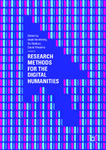| dc.description.abstract | This book introduces a range of digital research methods, locates each
method within critical humanities approaches, presents examples from
established and emerging practitioners, and provides guides for researchers.
In each chapter, authors describe their pioneering work with an
emphasis on the types of questions, methods, and projects open to
digital humanists. Some methods, such as the translation of literary
sources into digital games, are “native” to Digital Humanities and digital
technologies. Others, such as digital ethnographies, are adopted
and adapted from extensive traditions of humanities and social science
research. All of the featured methods suggest future avenues for Digital
Humanities research. They entail shifting ethical concerns related to online collaboration and participation, the storage and uses of data, and
political and aesthetic interventions. They push against the boundaries of
both technology and the academy. We hope the selection of projects in
this volume will inspire new questions, and that their practical guidance
will empower researchers to embark on their own projects.
Amidst the rapid growth of Digital Humanities, we identified the
need for a guide to introduce interdisciplinary scholars and students
to the methods employed by digital humanists. Rather than delimiting
Digital Humanities, we want to keep the field open to a variety of
scholars and students. The book was conceived after a panel on digital
research methods at a Cultural Studies Association conference, rather
than a Digital Humanities meeting. The brief emerged out of contributions
from the audience for our panel, conversation between the panel
presenters, and the broader conference that featured numerous presentations
addressing digital methods through a range of interdisciplinary
lenses and commitments. The guide is designed to build researchers’
capacities for studying, interpreting, and presenting a range of cultural
material and practices. It suggests practical and reflexive ways to understand
software and digital devices. It explores ways to collaborate and
contribute to scholarly communities and public discourse. The book
is intended to further expand this field, rather than establish definitive
boundaries. | en_US |

